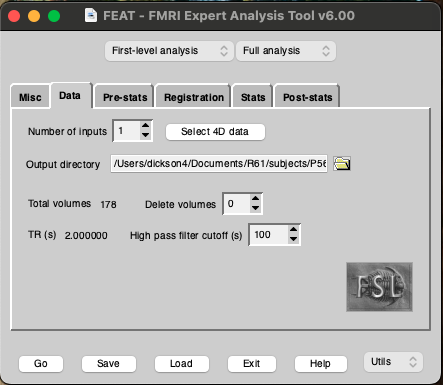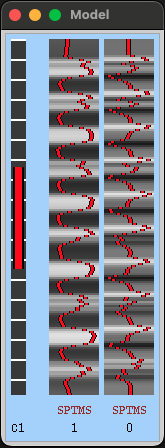Summary of what happened:
Hello all,
I am trying to use FSL FEAT to model BOLD response to fMRI-interleaved TMS.
During our fMRI acquisition, we are using a gated trigger to induce volume acquisition in order to leave a gap between EPIs to deliver stimulation.
The TR set by the scanner is 2.0s, but the volume trigger from PsychoPy is sent every 2.4s to allow for a 0.4s gap within which to deliver a TMS pulse.
From this, we generate a log file that is then converted into a timing file to use as a 3-column EV in FSL FEAT. However, this is potentially wrong as the time set in the first column of the timing file is relevant to the overall time from the start of scan including the 0.4s gap between each volume, but FEAT is not interpreting that gap and therefore our model is not accurate.
Is there any way to make FSL analyze the delay in between TRs? I feel as thought it would not be appropriate to model the events as “times” relative to the start.
Would a 1-column EV be better to just model the VOLUMES where the TMS events take place? Which convolution is most appropriate for this since the “actual” time between events is different than the volumetric acquisition time?
Thanks in advance for any guidance.
Screenshots / relevant information:
FEAT Setup - TR=2.00s

Timing file/log - gap between volumes = 2.4s

Model from FEAT - there are 12 “blocks” of TMS, but only 10 peaks in the design
